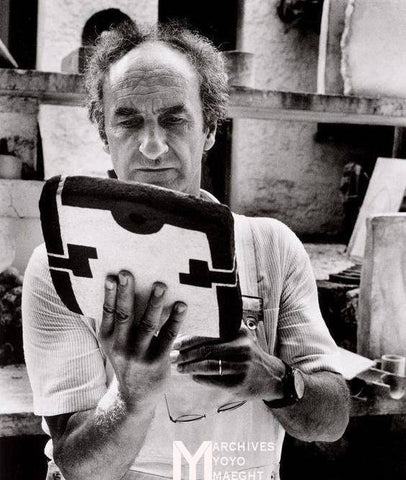.Chillida and Maeght
On his property, overlooking the Maeght Foundation in Saint-Paul-de-Vence, my grandfather, Aimé Maeght, not only created a heavenly garden where children and adults alike could dream, but he installed ceramic and engraving workshops .
The artists came to spend several months working with the best technicians and living as close as possible to Aimé, the Maeght Foundation and its international influence.
In these workshops, Miró made his greatest etchings, Tàpies developed printing techniques, Riopelle explored engraving and ceramics…
Their works were then exhibited at the Galerie Maeght.
Here, in 1973, Eduardo Chillida with a sculpture called "chamotte earth", photographed by the talented and kind Ernst Scheidegger.
Chamotte earth is a fine-structured earth dotted with much thicker elements (chamotte) visible to the naked eye. Most often, chamotte itself is a fired clay that has been ground into grains of various sizes.
"The Comb of the Wind", completed in 1977 in San Sebastián, is one of Eduardo Chillida's best-known works. Clinging to the rocks overlooking the sea, its color varies with the waves, the light, the seasons, a must see!
He was exhibited in 1956 at the Galerie Maeght, he is one of the artists who has had the greatest number of exhibitions organized by the Galerie Maeght, whether in Paris, Barcelona, or Zurich.
In 1958, at the age of 34, Chillida represented Spain at the Venice Biennale. In 1962 he had a personal exhibition at the Kunsthalle in Basel, then participated in the exhibition “Three Spaniards: Picasso, Miró, Chillida” at the Museum of Fine Arts in Houston. His works are still visible at the Maeght Foundation.
Chillida, great sculptor but also creator of an exceptional graphic work.

Huge engraving (160 cm high) which he soberly titled "Homage to Aimé Maeght".

Huge engraving (160 cm high) which he soberly titled "Homage to Aimé Maeght".



